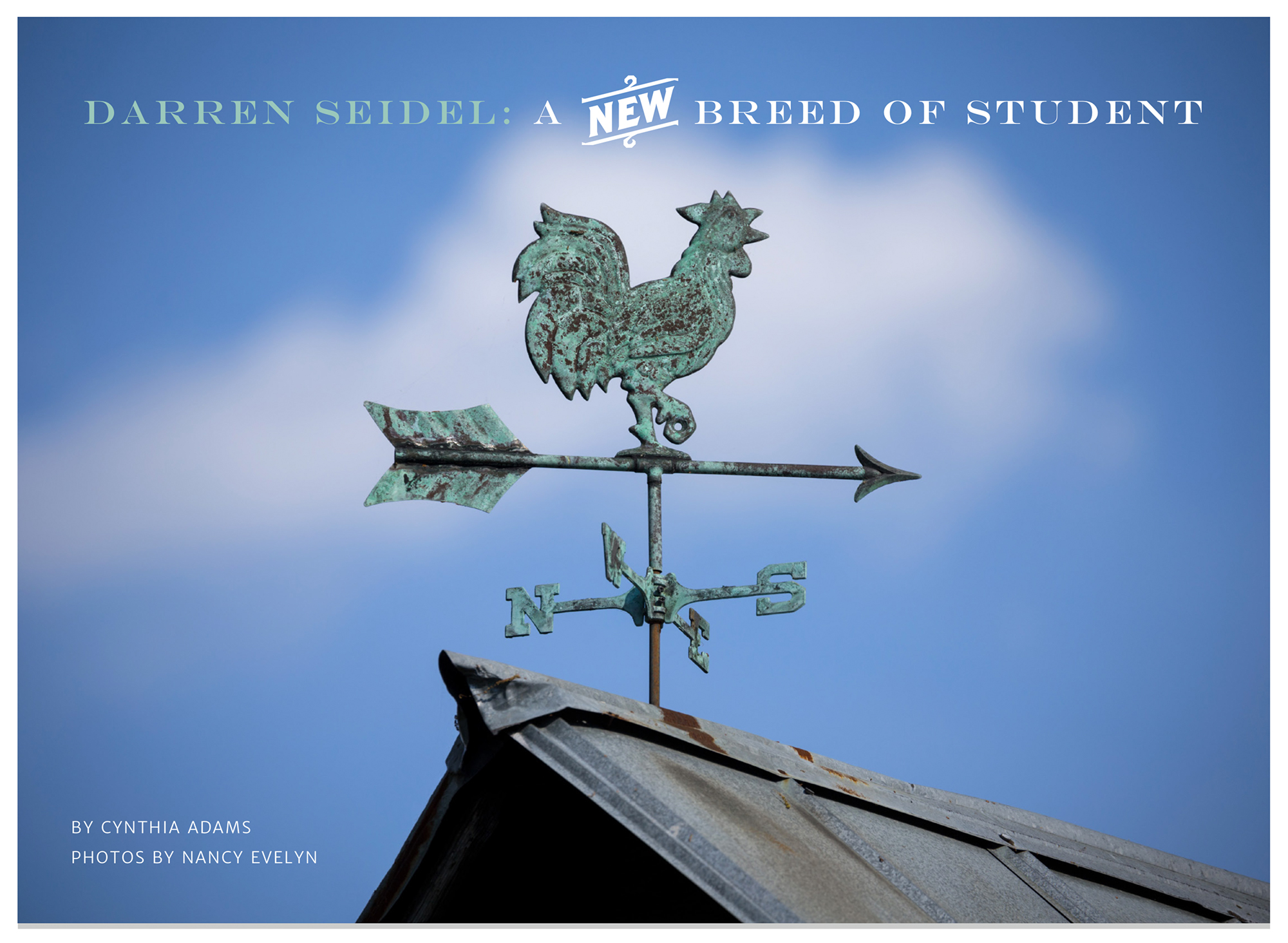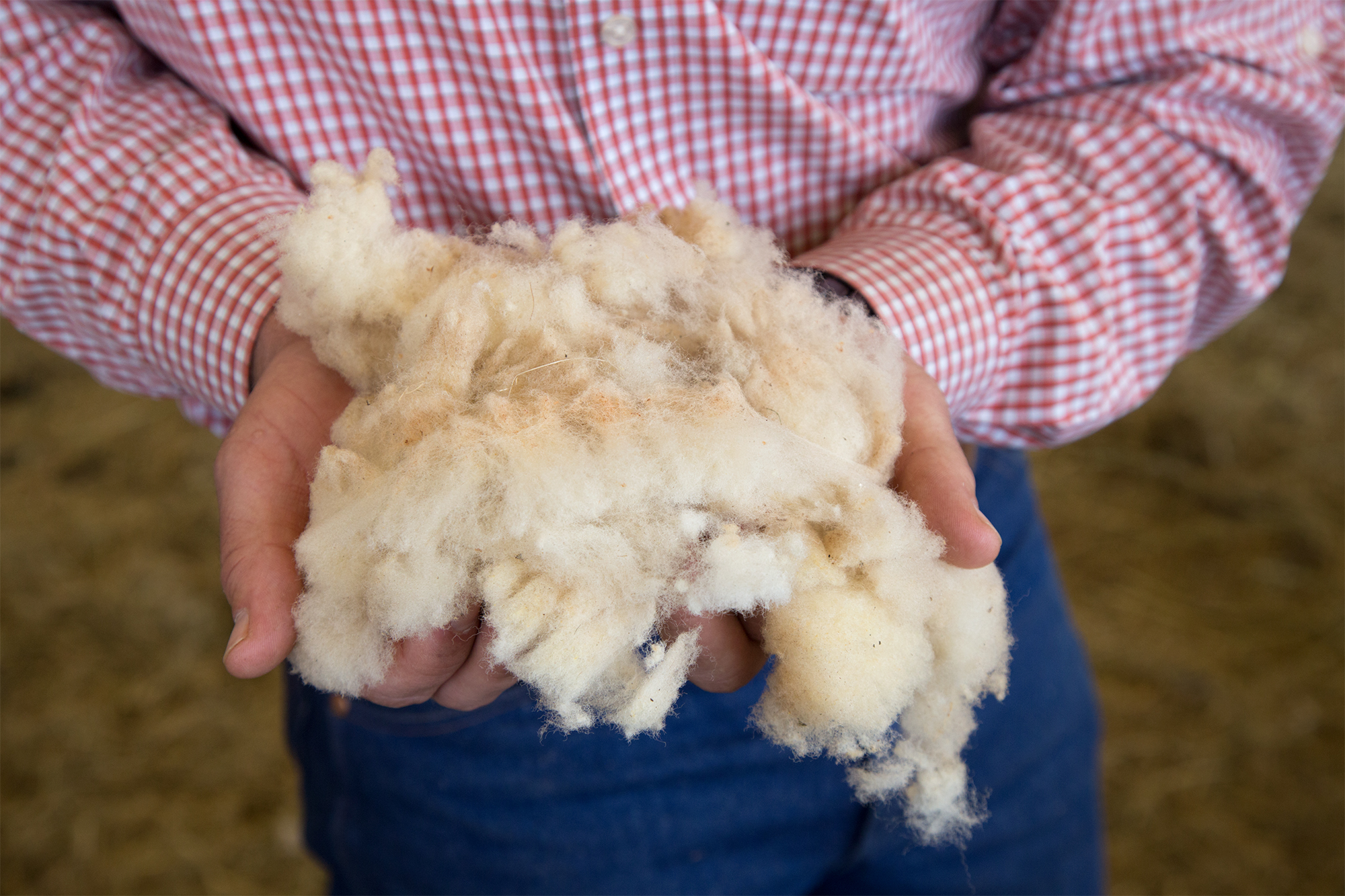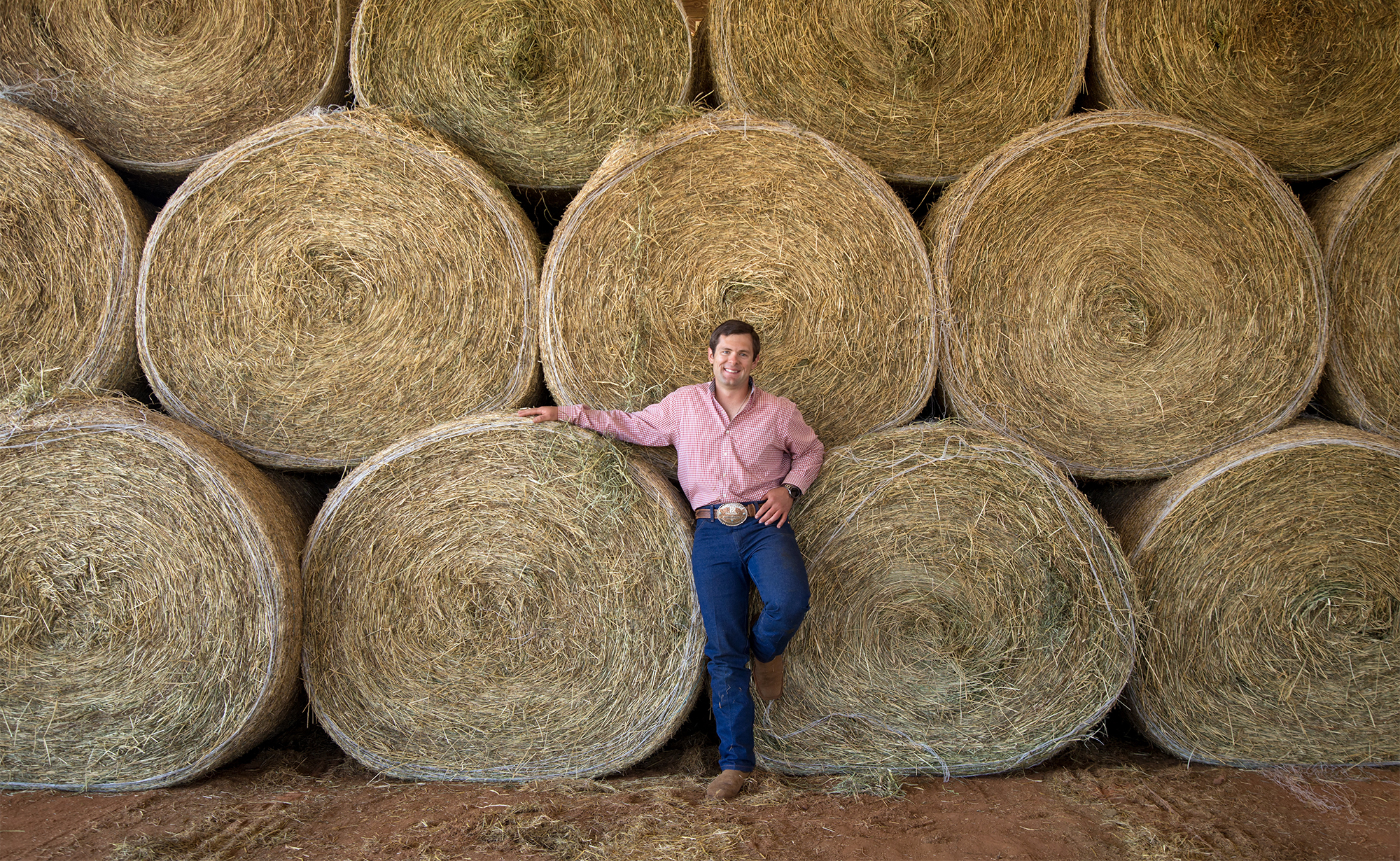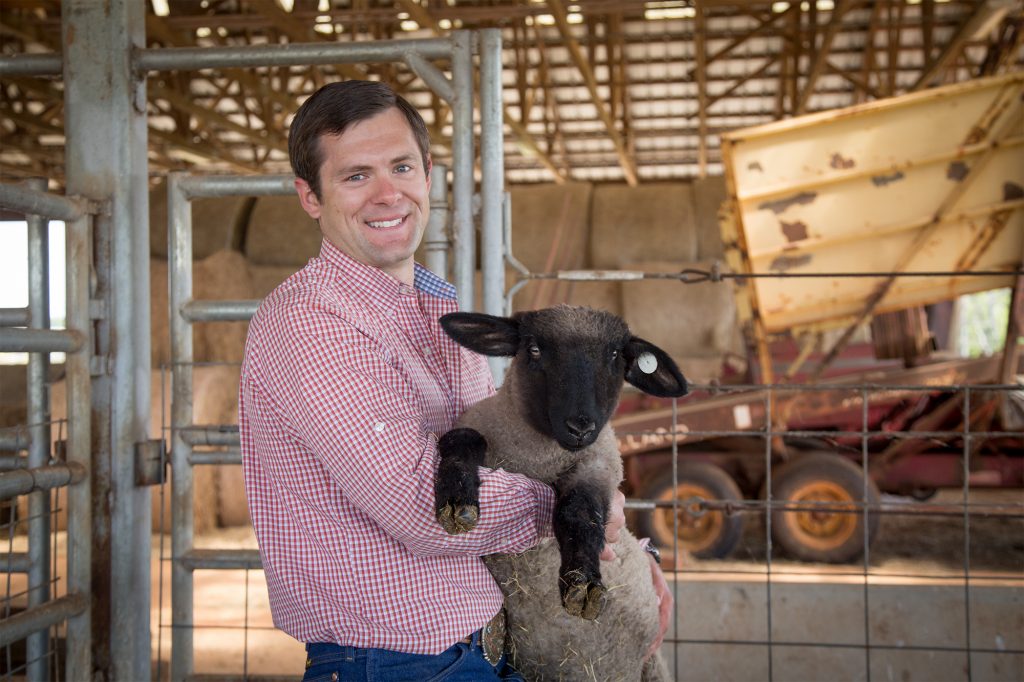Darren Seidel

Darren Seidel, a UGA PhD candidate in Animal and Dairy Science, was a high schooler in Sanderson, Texas when it became clear what he wanted most.
He wanted his own livestock.
Now, he’s actively pursuing that ambition as well as completing a doctorate, and has begun developing a sheep flock back in the Lone Star State. His ewes “will be lambing soon,” he explains.
Seidel began with Dorper sheep, a South African breed, distinctive for a black face and white body. “Or, Dorper sheep can be all white, with a white head and body,” Seidel clarifies.
He calls his business Seidel Livestock Company.
He is hands on, whether from powering through exhausting nights during lambing season to mastering the art of lamb shearing. Shearing, Seidel admits, is harder than it might seem.
Like most things, whether taking a long run or doing research, Seidel is earnest. And once he has a plan, he’s totally committed. He rolled up his sleeves and began learning to shear sheep soon after earning his undergraduate degree at Angelo State University.
(“After a recent trip to Texas, I realized I need more practice with this skill,” he jokes.)
He began graduate studies at Purdue, where Seidel studied the effects of heat stress on swine production. After his master’s, Seidel came to Georgia, choosing to study the microbial function of the rumen in sheep, goats, and cattle. He shifted career plans from academia to working inside the animal agricultural industry.
During his doctoral studies, he completed a Merck Animal Health internship, one of his “most arduous experiences.” It was also key to choices he would make thereon.
“My family never actually had the opportunity to farm or ranch in Southwest Texas, he explains. But he was exposed to ranching from early in life. It fueled his desire to live close to the land.
“Our property was in South Texas (about 220 miles from my hometown). I helped at a family friend’s ranch through a good portion of my grade school years. “He acknowledges he learned much from others as he immersed himself in studying sheep, he was “always the youngest” among those interested.

Texan-Style Straight Talk
Now 28, Seidel will complete his doctorate this December.Afterward, Seidel now sees himself working in different roles. The ultimate goal is becoming integrated “into the industry in animal nutrition, with flexibility to travel while working with an animal nutrition company,” mentioning companies such as Purina, DSM, and Cargill.
The next role he would attempt, Seidel explains, “is related to industry but with animal pharmaceutical companies, in animal nutrition and pharma.”
His ultimate, third goal, is a return to academia in a position where he would teach graduate students. As he explains, that third goal was previously his first ambition, but all that changed with time.
Seidel attended Angelo State University in San Angelo, Texas majoring in animal science and geosciences. He learned to judge livestock, and chose intercollegiate activities allowing him to develop specific skills.
He continued into graduate studies at Purdue University, where he studied swine production and animal welfare, but grew interested in the microbial function of the rumen.
Seidel received a National Science Foundation fellowship in the Interdisciplinary Disease Ecology Across Scales program at UGA after he joined UGA’s department of Animal and Dairy Science in 2018.
“Dr. Todd Callaway is my principal investigator,” he says. He acknowledges a large debt owed to his advisory committee, including Dr. Callaway, for their diverse expertise and guidance.
At UGA, Seidel studies how the microbes from the rumen detoxifies and utilizes toxic plant phytochemicals found in arid regions, such as the southwest corner of Texas where he lived.
“Phytochemicals can affect foodborne pathogen microorganisms,” he explains, “as well as important microbial fermentation end products.”
His focus at present is explaining his research in an accessible way, “argon-free.”
So, Seidel practices finding clear, direct ways of presenting his work to the non-academic, “real world.” If not successful in this, Seidel says, “people can’t really follow it” and if others can’t follow his work, it would handicap his goal of working successfully with farmers and customers—customers like those back in his close-knit Texas community.
Toward that end, he has been seriously honing his delivery to non-academics. Seidel refines this practice and stringently reviews himself in the same way he would approach any other challenge.
Seidel explains his general communications scheme: First, he tries to map out a story, connecting science with the audience’s experiences and knowledge, therefore, making it relatable.
He says he’s worked hard to make the complex straightforward. “A humbling comment I often receive is when told I can take something complicated and make a general audience understand it.”
Job accomplished, Seidel hopes.
Seidel practices finding clear, direct ways of presenting his work to the non-academic, “real world.” If not successful in this, Seidel says, “people can’t really follow it.”
Running Towards the Future
As Seidel sees it, the biggest potential for the future lies in interdisciplinary work. His research area has expanded to the microbial function of the rumen in sheep, goats, and cattle.
At UGA, he works both with area cattle producers in Oglethorpe County, GA, and also with improving the genetics of the UGA sheep flock. He ultimately envisions moving into a technical service position within the animal agricultural industry.
A Rancher at Heart
Seidel always wanted his own livestock. He began developing a sheep flock back in the Lone Star State. His ewes “will be lambing soon,” he explains.
He calls his business Seidel Livestock Company.
Seidel began with Dorper sheep, a South African breed, distinctive for a black face and white body. “Or, Dorper sheep can be all white, with a white head and body,” Seidel clarifies.
A Dorper sheep is a fast-growing, meat-producing sheep. The Dorper is an easy-care animal that produces a short, light coat of wool and hair that is shed in late spring and summer. It is now the second most popular breed in South Africa. wikipedia.org
“Ultimately to get a bigger cast of people you need people fluent in marketing to connect with the social scientists.” He realizes, too, there “is a threshold to get people interested.”
A former professor, James Ward at Angelo State University, caused Seidel to dream a larger dream. “He was a geology professor; I was fixing to transfer out, or settle. I wanted a bigger challenge. He became a personal mentor.”
Thanks to Ward and important mentors, Seidel did not settle.
“Every step of the way there has been a critical person,” he acknowledges. Another huge influence from his youth was Becky Norris, a middle school math teacher, “pushing you to be a better student.”
As Seidel completes the last portion of the marathon to finalize his doctorate, he literally runs the equivalent on the hilly terrain of Athens. “I’m running 18, sometimes 30 miles a week.”
He is newly engaged to marry and says he looks forward to creating a family.
“My biggest life goal is to be a great husband and father. Professionally, I dream of being successful whatever that might look like, but my biggest personal dream has always been to be a great family man.”
Seidel lavishly praises his own family. “They were always there. And continue to be my heroes and role models to this day.”
Seidel adds that he has also found a second, close- knit, academic family in the UGA Animal and Dairy Science Department and he credits “the faculty, staff, and fellow graduate students” with making his PhD experience “so wonderful”.
But he observes what many graduate students do: the ever-present problem of money.
“The biggest challenge of Graduate School is the funding, finding the mesh that allows you to function. Having a concrete funding source and understanding those stipends and fees.”











